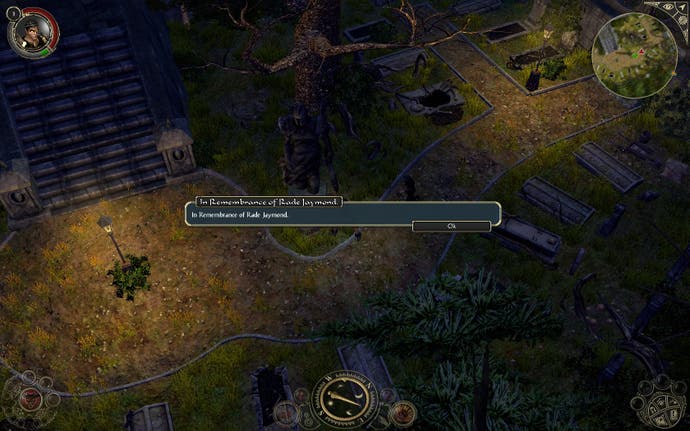Sacred 2
Nothing is these days, is it?
The best way to sum up the allures of Sacred 2 isn't to embark on a thrilling tale in which a myriad of beasts become hacked, slashed and fried by magic - but instead to discuss the map system. So obsessed with micro-management and detail and so (with no offence intended) very German is Sacred 2 that there's an in-game menu with which you can play around with the size, scale, curvature, icon size and overall transparency of the on-screen mini-map. Cartographers of the world, rejoice!
But then: wait! Part two of our earnest discussion of the Sacred 2 map system reveals that even after a 500MB post-release patch the bugged world map will inevitably go missing, leaving you with nothing but a collection of icons hovering above your avatar's head. What Sacred 2 giveth with a small, manicured and delicate hand, it tends to taketh away with a heavier one.
Sacred 2 lives in that most tight-set and hermit-like of genres - the Diablo-esque hack/slash/click RPG. It's a part of the PC gaming firmament whose borders, you'd have thought, would have been increasingly munched away by the MMO boom of recent years. Hype for Diablo III and the success of the original Sacred in its home country, however, suggest not.
The game sees you select your class (now with added good and evil varieties) and sashay your way through the land of Ancaria - left-clicking to attack, right-clicking to use magical rune powers. Every five minutes sees, on average, thirty things die at your hand and through their deaths comes experience, gold, items and all manner of twiddly bits to fine-tune your characters abilities - whether that's runes, buffs or whatever. As ever it's a relentless dance of constantly improving your character in the face of ever-more powerful enemies, and a tangible taste of obsession and compulsion dramatically ensues.
Ancaria is an interesting and pretty place, in a top-down sort of way. Ostensibly it's your average fantasy world but it runs on something called T-Energy, a fantastical blue-flavoured Gatorade that's piped throughout the land. This means you can be happily tromping through the Tolkien-esque landscape, carving your way through elves and wolves, before stumbling upon almost industrial scenes, like workmen fixing a leaky pipe.

It messes with your expectation and also means that character types and enemies alike aren't restricted to the fey and pointy-eared. Notably, the Temple Guardian class is a cyborg rendition of the ancient Egyptian dog-headed god Anubis, replete with a laser gun that lives in his left arm. The storyline, meanwhile, follows an inter-elf and inter-race scrabble for T-Energy, which in turn gets out of hand until said blue effluent warps lumps of Ancaria beyond recognition - and as such has you either fighting an evil campaign to encourage its noxious taint, or being all good and holy and fighting against it in the self-same play area.


